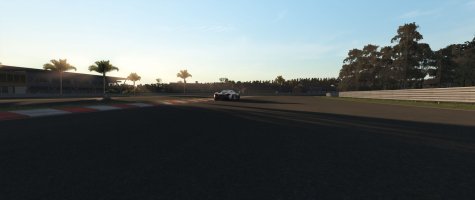I managed to mount my Thermalright Le Grand Macho. The four #6-32 x 3/4" (19mm) screws arrived within 2 days via padded letter envelope from a German online "inch shop".
I 3D printed new "distance-poles" without threading and wide enough for the #6-32 screws going through. Pretty easy!
The endboss was the Thermalright stainless steel frame though.
One of my best mates bought the same parts I bought but bought his standard Macho Rev. B a year later and got the AM4 screws.
However Thermalright used their own backplates for AM4 and M3 screws from both sides into the distance-poles (bottom screw through backplate+mobo, top screw through mounting frame into the distance-pole).
So same positions for the mounting holes, identical CPU height (since it's AM4 compatible!), different screws!
And 3D printed distance-poles needed!
#6-32 are 3.51mm diameter, the M3 holes were only 3.49mm.
Luckily I have a super cheap Dremel-Clone from Aldi but with a 10€ original Dremel milling bit, which is full carbide with half-round tip.
Widening the holes to 4mm was quite easy. Took 10 minutes total.
However MY frame had NO AM4 holes. I used his frame to trace the layout on paper.
Pinched the AM4 holes, put the paper on my frame and punch marked the positions.
Then I read about drilling into stainless steel and didn't want to wait for a carbide drill from Amazon.
Drove to a hardware store, bought a set of 2 standard HSS 4mm drills for 7€ and stopped at my best mate's dad's house to use his drill press.
Slowest rpm, some random standard oil, medium pressure.
The angled tip of the drill went in super easily, then it stopped cutting and we couldn't even get another 0.001mm deeper.
Took the second drill and veeeeery carefully tried to get it to cut at all. Nope, no chance!
Jumped back into the car, drove to another hardware store and bought a cobalt drill, which is explicitly for stainless steel. 5€.
They didn't have anything better...
I then managed to drill
1 hole with ease, but it stopped after the tip on the second hole......... Like WTF?!
However it managed to get the tip in for the other 2 holes.
I then had to choose between trying to "wolf down?!"

the holes with my Dremel full carbide milling bit or spend another 9€ on a carbide drill and wait 3 days for it to arrive.
End of the story: I milled for 1.5h and although the holes are quite ugly, my Macho was mounted before midnight

The milling bit got stuck for a short moment while wanting to mill one hole a bit quicker.
I was quite sure that either the mill would break or my hands would break but to my surprise the milling bit was just a bit deformed but continued to mill just fine, LOL.
The punch through my hands/arms wasn't that strong either tbh. I expected more from 30k rpm

Stainless steel can be really tough to drill. I knew this, but I didn't expect 4mm into only a 2mm thick plate to be THAT hard.
I'm impressed by full carbide tools though. Apart from the deformed area in the middle of the mill bit, it's still super sharp and looks like new Oo











